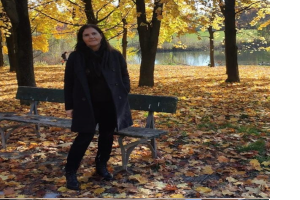The Italian school system has a long tradition of inclusive education which started in the 1970s with the first experiences of integrating students with disabilities into mainstream schools.
 In fact, since then the Italian legislation has developed to guarantee all students with disabilities or special needs the right to individualize or persolalize education. Italy has long implemented an anti- discriminatory educational policy and abandoned special needs students segragation in 1977, with Law 517, long before all other European countries, and in 1992, Law No 104.
In fact, since then the Italian legislation has developed to guarantee all students with disabilities or special needs the right to individualize or persolalize education. Italy has long implemented an anti- discriminatory educational policy and abandoned special needs students segragation in 1977, with Law 517, long before all other European countries, and in 1992, Law No 104.
The normative foundations of Italian school system are based on the Constitution, which states (art. 3) that all the citizens have equal social dignity and gives great importance to the state in removing the “those obstacles of an economic or social nature which constrain the freedom and equality of citizens” thus impeding full development of the human person and the effective participation of all in the social organisation of the country.
Being included in regular schools had a strong impact on people with disabilities: in 2009 a study (Canevaro, D’Alonso, Ianes) showed that their school careers were getting longer than before and it revealed a connection between school career length and the perceived quality of adult life. Their perception of normal life, their workplaces satisfaction and their confidence in the future were higher than those in people with disabilities in the previous years.
In 2011, a survey of TreeLLLe Association, Caritas, and Agnelli Foundation showed that teachers saw the presence of students with disabilities as enriching the class climate and their own professional development. Furthermore, the presence of students with disabilities in class led to positive developments in terms of teaching methods: a group of more than 3000 teachers were asked to describe the way of teaching in a class with a disability and the result suggested that the presence of a student with a disability supported the use of a variety of teaching and learning settings.
According to Hall, Meyer and Rose, 2012, while the variety of teaching methods is crucial to create a setting that allows students with disabilities to participate, the pluralization of learning settings can also be seen as a quality criterion for universal learning and teaching. In 2014, a survey ( Ianes, Demo, Zambotti) indicated thatlearning and socialization results were better in classes where students with disability were always in class with their classmates, regardless of the seriuosness of the disability.
The school inclusive system of the 1970s granted Educational Individualized Plans for students with a certified disability, in 2010 for students with specific learning disabilities and later for those with other Special Educational Needs, included students with sociocultural disadvantages. That’s to say students who seemed more exposed to risks of underachievement or exclusion: the SENs (Special Educational Needs) became specially “ protected students”, to grant accomodations to all students who needed them on an equal basis (Ianes,2005).
In 2015, Law No. 107 on the reform of the educational system empowered the Government to adopt legislative decrees to promote an effective and inclusive education for people with disabililities. Recently, decrees D lgs. 66/2017 and D. Lgs. 96/2019 have introduced an innovative move towrds a more relational model of intervention for students with a disability, by means of the adoption of the International Classification Functionning, Disability and Health- ICF- as a reference model, allowing detailed descriptions of the complexity and uniqueness of each disability condition and introduces a relation vision of disability.
So,in conclusion, if the Italian school legislation has established the basis for a genuinely inclusive school system, the latest expansion of Italian legislation in favour of disabilities and special needs students guarantees access to further resources and implements indispensable measures to guarantee the educational success of the students in their social and cultural context.
Manuela Rivetti Laureata in Lingue e Letterature Straniere presso l’Università degli Studi di Torino, ho conseguito le abilitazioni all’insegnamento per le classi di concorso A45 e A46, lingua inglese nella scuola secondaria di primo grado e lingua e cultura inglese nella secondaria di secondo grado. Ho inoltre conseguito l’abilitazione all’insegnamento nella scuola dell’infanzia e la doppia abilitazione nella scuola primaria, sia come docente su posto comune che come docente di inglese.
La lingua inglese e l’insegnamento sono la mia passione, e per questo ho proseguito il mio percorso con un Corso di Perfezionamento in Didattica delle Lingue Straniere.
A partire dal 2009 ho svolto diversi corsi di formazione per i docenti della scuola primaria in qualità di tutor per lo sviluppo delle competenze linguistiche--comunicative e metodologico – didattiche presso l’ USR Piemonte. Nell’anno scolastico 2012-13 sono stata la referente del Progetto Comenius Regio “Boosting Knowledge Through Music “, svolto in collaborazione con alcune scuole del Devon, tra cui un istituto “for special needs”, che mi ha permesso di approfondire la conoscenza del sistema scolastico inglese e della cultura anglosassone in materia di insegnamento - apprendimento.
Dal 2007 mi occupo di Orientamento scolastico e di continuità come Funzione strumentale.
Ho partecipato a vari progetti sulla costruzione del curricolo verticale coordinati dal prof. Martin Dodman e lo scorso anno scolastico ho fatto parte del suo gruppo di lavoro per la correzione nazionale delle prove Invalsi di lingua inglese.
Condivido il motto di Edgar Morin, “meglio una testa ben fatta che ben piena”, insieme a quello di William Butler Yeats, “Education is not the filling of a pail, but the lighting of a fire”.



